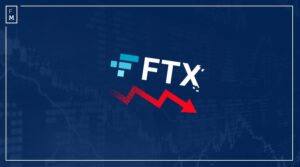
In recent times, a notable trend has emerged, with European companies choosing to delist from their home exchanges and instead opting for listings on prominent US platforms like the New York Stock Exchange and NASDAQ. Simultaneously, financial projections for the S&P 500 in 2024 reveal a bullish outlook, with strategists foreseeing the index reaching new heights. Exploring these market dynamics reveals intriguing correlations that shape the evolving landscape of global finance.
Global Corporate Migration: Motivations and Trends
A significant number of European companies, ranging from Flutter Entertainment to CRH and Smurfit Kappa, are redirecting their listing preferences toward prominent US exchanges. The allure of higher valuations and access to larger markets appears to be a driving force behind this trend. Additionally, the US Inflation Reduction Act has earmarked funds for green and sustainable projects, offering enticing opportunities for UK companies in these sectors.
Market Dominance and Economic Dynamics
Emphasizing the dominance of US equities in world markets, about 70% of the MSCI World Index is comprised of US firms. The rapid economic growth of the US, outpacing that of European counterparts, has been instrumental in establishing this dominance. The S&P 500's nearly tripling in value since the global financial crisis contrasts with the slower growth observed in European exchanges.
Tech Opportunities and Investment Avenues
For UK tech companies, a listing on the NASDAQ is perceived as a gateway to myriad opportunities. The US, particularly focused on becoming self-sufficient in semiconductor production, provides additional investment avenues for semiconductor and AI companies. The robust investment landscape in the US, coupled with the expertise of US-based venture capital and private equity firms, makes US exchanges an attractive option for European IPOs.
2024 Financial Projections: Opinions Differ
Transitioning to financial projections, strategists anticipate a bullish outlook for the S&P 500 in 2024. Forecasts predict the index reaching new highs, with expectations rooted in normal GDP and earnings growth, valuations, and bond yield ranges. Confidence in the S&P 500 trading at a higher valuation than its historical standard is underpinned by projections of robust earnings growth.
However, some still feel pessimistic:
Global Economic Factors and Risk Considerations
While optimism pervades these market analyses, potential risks are acknowledged. Concerns include the US Federal Reserve's monetary tightening policy and the possibility of geopolitical conflicts causing inflation and disrupting supply chains. Financial projections also consider the potential for a recession in the first half of 2024, with expectations of a modest and short-lived selloff in stocks.
Correlation or Causation?
The correlation between European companies favoring US exchanges and the bullish projections for the S&P 500 in 2024 is apparent. The allure of higher valuations, expansive markets, and favorable economic conditions in the US serves as a common thread. While the analyses don't explicitly establish causation, they collectively paint a picture of a global financial landscape where economic opportunities and growth are currently leaning toward the United States, influencing both corporate listing decisions and market projections.
This correlation underscores the interconnectedness of global financial markets, where decisions made by companies on where to list can be influenced by, and in turn, influence broader market sentiments and projections.
In recent times, a notable trend has emerged, with European companies choosing to delist from their home exchanges and instead opting for listings on prominent US platforms like the New York Stock Exchange and NASDAQ. Simultaneously, financial projections for the S&P 500 in 2024 reveal a bullish outlook, with strategists foreseeing the index reaching new heights. Exploring these market dynamics reveals intriguing correlations that shape the evolving landscape of global finance.
Global Corporate Migration: Motivations and Trends
A significant number of European companies, ranging from Flutter Entertainment to CRH and Smurfit Kappa, are redirecting their listing preferences toward prominent US exchanges. The allure of higher valuations and access to larger markets appears to be a driving force behind this trend. Additionally, the US Inflation Reduction Act has earmarked funds for green and sustainable projects, offering enticing opportunities for UK companies in these sectors.
Market Dominance and Economic Dynamics
Emphasizing the dominance of US equities in world markets, about 70% of the MSCI World Index is comprised of US firms. The rapid economic growth of the US, outpacing that of European counterparts, has been instrumental in establishing this dominance. The S&P 500's nearly tripling in value since the global financial crisis contrasts with the slower growth observed in European exchanges.
Tech Opportunities and Investment Avenues
For UK tech companies, a listing on the NASDAQ is perceived as a gateway to myriad opportunities. The US, particularly focused on becoming self-sufficient in semiconductor production, provides additional investment avenues for semiconductor and AI companies. The robust investment landscape in the US, coupled with the expertise of US-based venture capital and private equity firms, makes US exchanges an attractive option for European IPOs.
2024 Financial Projections: Opinions Differ
Transitioning to financial projections, strategists anticipate a bullish outlook for the S&P 500 in 2024. Forecasts predict the index reaching new highs, with expectations rooted in normal GDP and earnings growth, valuations, and bond yield ranges. Confidence in the S&P 500 trading at a higher valuation than its historical standard is underpinned by projections of robust earnings growth.
However, some still feel pessimistic:
Global Economic Factors and Risk Considerations
While optimism pervades these market analyses, potential risks are acknowledged. Concerns include the US Federal Reserve's monetary tightening policy and the possibility of geopolitical conflicts causing inflation and disrupting supply chains. Financial projections also consider the potential for a recession in the first half of 2024, with expectations of a modest and short-lived selloff in stocks.
Correlation or Causation?
The correlation between European companies favoring US exchanges and the bullish projections for the S&P 500 in 2024 is apparent. The allure of higher valuations, expansive markets, and favorable economic conditions in the US serves as a common thread. While the analyses don't explicitly establish causation, they collectively paint a picture of a global financial landscape where economic opportunities and growth are currently leaning toward the United States, influencing both corporate listing decisions and market projections.
This correlation underscores the interconnectedness of global financial markets, where decisions made by companies on where to list can be influenced by, and in turn, influence broader market sentiments and projections.
- SEO Powered Content & PR Distribution. Get Amplified Today.
- PlatoData.Network Vertical Generative Ai. Empower Yourself. Access Here.
- PlatoAiStream. Web3 Intelligence. Knowledge Amplified. Access Here.
- PlatoESG. Carbon, CleanTech, Energy, Environment, Solar, Waste Management. Access Here.
- PlatoHealth. Biotech and Clinical Trials Intelligence. Access Here.
- Source: https://www.financemagnates.com//institutional-forex/transatlantic-trading-tango-european-companies-dance-to-the-us-stock-exchange-beat/
- :has
- :is
- :where
- ][p
- 2024
- 500
- a
- About
- access
- acknowledged
- Act
- Additional
- Additionally
- AI
- allure
- also
- an
- analyses
- and
- anticipate
- apparent
- appears
- ARE
- AS
- At
- attractive
- avenues
- banner
- BE
- beat
- becoming
- been
- behind
- between
- bond
- both
- broader
- Bullish
- by
- CAN
- capital
- causing
- chains
- choosing
- collectively
- Common
- Companies
- Comprised
- Concerns
- conditions
- confidence
- conflicts
- Consider
- contrasts
- Corporate
- Correlation
- correlations
- counterparts
- coupled
- crisis
- Currently
- dance
- decisions
- Dominance
- don
- driving
- dynamics
- Earnings
- Economic
- Economic Conditions
- Economic growth
- Entertainment
- enticing
- Equities
- equity
- establish
- establishing
- European
- evolving
- exchange
- Exchanges
- expansive
- expectations
- expertise
- explicitly
- Exploring
- factors
- favorable
- Federal
- federal reserve
- feel
- finance
- financial
- financial crisis
- firms
- First
- flutter
- focused
- For
- Force
- forecasts
- foreseeing
- from
- funds
- gateway
- GDP
- geopolitical
- Global
- global financial
- Green
- Growth
- Half
- heights
- higher
- Highs
- historical
- Home
- HTTPS
- in
- include
- index
- inflation
- influence
- influenced
- influencing
- instead
- instrumental
- interconnectedness
- intriguing
- investment
- IPOs
- ITS
- jpg
- landscape
- larger
- like
- List
- listing
- Listings
- made
- MAKES
- Market
- Markets
- migration
- modest
- Monetary
- monetary tightening
- motivations
- MSCI
- myriad
- Nasdaq
- nearly
- New
- New York
- New York Stock Exchange
- normal
- notable
- number
- observed
- of
- offering
- on
- Opinions
- opportunities
- Optimism
- Option
- or
- Outlook
- paint
- particularly
- perceived
- pervades
- pessimistic
- picture
- Platforms
- plato
- Plato Data Intelligence
- PlatoData
- policy
- possibility
- potential
- predict
- preferences
- private
- Private Equity
- Production
- projections
- projects
- prominent
- provides
- ranging
- rapid
- reaching
- recent
- recession
- reduction
- Reserve
- Reuters
- Reveals
- Risk
- risks
- robust
- rooted
- s
- S&P
- S&P 500
- Sectors
- SellOff
- semiconductor
- sentiments
- serves
- Shape
- significant
- simultaneously
- since
- some
- standard
- States
- Still
- stock
- Stock Exchange
- Stocks
- supply
- Supply chains
- sustainable
- T
- tech
- tech companies
- than
- that
- The
- The US Federal Reserve
- their
- These
- they
- this
- tightening
- times
- to
- toward
- Trading
- Transatlantic
- Trend
- tripling
- TURN
- Uk
- underpinned
- underscores
- United
- us
- US Equities
- US Federal
- us federal reserve
- us inflation
- US inflation reduction act
- Valuation
- Valuations
- value
- venture
- venture capital
- while
- with
- world
- Yield
- york
- zephyrnet










